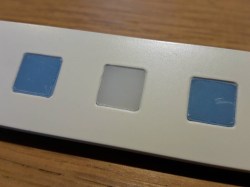In the movie 2001: A Space Odyssey, HAL 9000 — the neurotic computer — had a birthday in 1992 (for some reason, in the book it is 1997). In the late 1960s, that date sounded impossibly far away, but now it seems like a distant memory. The only thing is, we are only now starting to get computers with voice I/O that are practical and even they are a far cry from HAL.
[GeraldF6] built an Arduino-based clock. That’s nothing new but thanks to a MOVI board (ok, shield), this clock has voice input and output as you can see in the video below. Unlike most modern speech-enabled devices, the MOVI board (and, thus, the clock, does not use an external server in the cloud or any remote processing at all. On the other hand, the speech quality isn’t what you might expect from any of the modern smartphone assistants that talk. We estimate it might be about 1/9 the power of the HAL 9000.
You might wonder what you have to say to a clock. You’ll see in the video you can do things like set and query timers. Unlike HAL, the device works like a Star Trek computer. You address it as Arduino. Then it beeps and you can speak a command. There’s also a real-time clock module.
Setting up the MOVI is simple:
recognizer.init(); // Initialize MOVI (waits for it to boot)
recognizer.callSign("Arduino"); // Train callsign Arduino (may take 20 seconds)
recognizer.addSentence(F("What time is it ?")); // Add sentence 1
recognizer.addSentence(F("What is the time ?")); // Add sentence 2
recognizer.addSentence(F("What is the date ?")); // Add sentence 3
...
Then a call to recognizer.poll will return a numeric code for anything it hears. Here is a snippet:
// Get result from MOVI, 0 denotes nothing happened, negative values denote events (see docs)
signed int res = recognizer.poll();
// Tell current time
if (res==1 | res==2) { // Sentence 1 & 2
if ( now.hour() > 12)
recognizer.say("It's " + String(now.hour()-12) + " " + ( now.minute() < 10 ? "O" : "" ) +
String(now.minute()) + "P M" ); // Speak the time
...
Fairly easy.
HAL being a NASA project (USSC, not NASA, and HAL was a product of a lab at University of Illinois Urbana-Champaign – ed.) probably cost millions, but the MOVI board is $70-$90. It also isn’t likely to go crazy and try to kill you, so that’s another bonus. Maybe we’ll build one in a different casing. We recently talked about neural networks improving speech recognition and synthesis. This is a long way from that.
Filed under:
Arduino Hacks,
clock hacks 

 You won’t have to learn the resistor color codes or bizarre binary encodings to tell what time it is. There are no glitzy graphics here, or modified classic timepieces. This project is minimal, clean, and elegant. Twelve LEDs display the hours, six and nine LEDs take care of the minutes in add-em-up-coded decimal. (It’s 3:12 in the banner image.)
You won’t have to learn the resistor color codes or bizarre binary encodings to tell what time it is. There are no glitzy graphics here, or modified classic timepieces. This project is minimal, clean, and elegant. Twelve LEDs display the hours, six and nine LEDs take care of the minutes in add-em-up-coded decimal. (It’s 3:12 in the banner image.)
